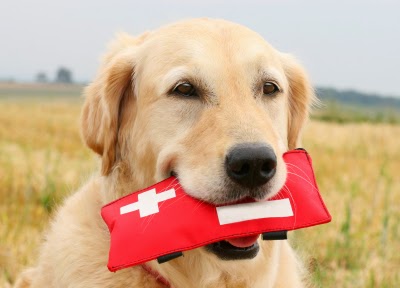Heatstroke (or hyperthermia) occurs when a pet is unable to keep its body temperature at a normal range. During the warmer months, dogs become more susceptible to heatstroke because of their inability to sweat all over their bodies like people do. Instead, a dog's primary way of regulating their body temperature is through respiration (or panting). Heat stroke can occur in dogs under several conditions such as being left in a car in hot weather, strenuous exercise in hot humid weather, and being left out in the sun without shade or water.1 Although normal ranges for dogs do vary, a body temperature between 99.5 degrees and 102.5 degrees is usually a healthy range.
How to Prevent Heatstroke?
Heat stroke can be easily prevented if you take these precautions:
Heat stroke can be easily prevented if you take these precautions:
- When in warm temperatures, always make sure your dog has shade and plenty of fresh water.
- Constantly monitor your dog’ behavior in hot weather. Restriction of exercise may be necessary.
- Do not muzzle your dog in the heat, or do anything that may restrict its breathing. Panting is their main method of temperature control.
- NEVER leave your dog in a parked car for any amount of time on a hot day, even if it is in the shade or the windows are open.
What to Do if You Suspect Your Pet Has Heatstroke
If you suspect that your dog has heatstroke, it is very important that you contact your veterinarian immediately. Depending on the circumstance, it also may be necessary to cool your dog down before you can get to a veterinarian. This can be done by pouring cool or tepid water (not ice cold) over the body. The additional use of a fan blowing cool air will also help.1
If you suspect that your dog has heatstroke, it is very important that you contact your veterinarian immediately. Depending on the circumstance, it also may be necessary to cool your dog down before you can get to a veterinarian. This can be done by pouring cool or tepid water (not ice cold) over the body. The additional use of a fan blowing cool air will also help.1
If you notice a distressed animal in a hot, parked car,
contact animal control or the police immediately.
1. http://www.cesarsway.com/dog-care/dog-health/heat-stroke-in-dogs



